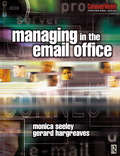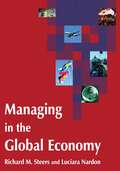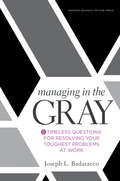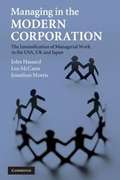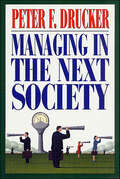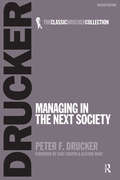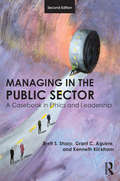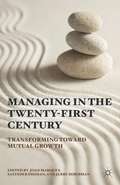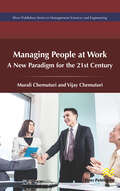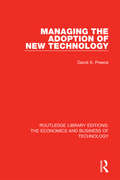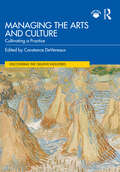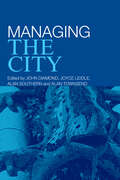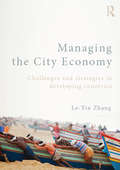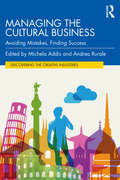- Table View
- List View
Managing in an Age of Modularity
by Kim B. Clark Carliss Y. BaldwinModularity is a familiar principle in the computer industry. Different companies can independently design and produce components, such as disk drives or operating software, and those modules will fit together into a complex and smoothly functioning product because makers obey a given set of design rules. As businesses as diverse as auto manufacturing and financial services move toward modular designs, the authors say, competitive dynamics will change enormously. Leaders in a modular industry will control less, so they will have to watch the competitive environment closely for opportunities to link up with other module makers. They will also need to know more: engineering details that seemed trivial at the corporate level may now play a large part in strategic decisions. Leaders will also become knowledge managers internally because they will need to coordinate the efforts of development groups in order to keep them focused on the modular strategies the company is pursuing.
Managing in the Email Office (Computer Weekly Professional Ser.)
by Monica Seeley Gerard HargreavesManaging the Email Office is for all people who feel email is taking over their lives. It provides practical help and guidance on how to manage both their own volume of email as well as their organization's. It will enable you to develop winning ways with email and to re-claim some of those valuable resources which email consumes.The authors offer solutions to managing email that will help you save time and use email to communicate effectively and send the right message, right first time. These solutions are based on personal preferred patterns of work and management styles. The authors show you how to use email to support you and your team, to become more productive and reduce stress. Case histories are included throughout, to help you understand and apply the contents to you own and your organisation's situation. This book addresses: * how time management and personal effectiveness can be improved through better use of email. * how to develop and implement an email best practice policy for the organization. * how email can be used constructively to support customer relationship management and knowledge management
Managing in the Global Economy
by Richard M. Steers Luciara NardonThis definitive text will bring a new level of professionalism to courses in International Management. Truly global in focus, it is a comprehensive primer on the challenges and prospects of international management, with a particular emphasis on developing global managers who are skilled in economics, strategy, and general management. In addition, the authors help readers develop an in-depth understanding of the role of cultural differences in managerial effectiveness. The text is divided into three parts: the emerging global economy; culture, organization, and strategy; and managing global operations. Management topics include: organizing for international business, global business strategy, building strategic alliances, international negotiations, global staffing, managing a competitive workforce, TQM and employee involvement, and managing multicultural teams. Throughout the text, the authors integrate current conceptual materials on global management with in-depth country analyses and real-world business examples. Each chapter begins with an opening case vignette (from countries around the world) and concludes with a list of key terms and in-depth exercises (Global Manager's Workbook). The text also provides country ratings for 50 countries on economic activity, political risk, and cultural differences, as well as a 35 item instrument for students to measure their own cultural awareness
Managing in the Gray: Five Timeless Questions for Resolving Your Toughest Problems at Work
by Joseph L. Badaracco Jr.How to Resolve the Really Hard ProblemsEvery manager makes tough calls-it comes with the job. And the hardest decisions are the "gray areas"-situations where you and your team have worked hard to find an answer, you've done the best analysis you can, and you still don't know what to do. But you have to make a decision. You have to choose, commit, act, and live with the consequences and persuade others to follow your lead. Gray areas test your skills as a manager, your judgment, and even your humanity. How do you get these decisions right?In Managing in the Gray, Joseph Badaracco offers a powerful, practical, and even radical way to resolve these problems. Picking up where conventional tools of analysis leave off, this book provides tools for judgment in the form of five revealing questions. Asking yourself these five questions provides a simple yet profound way to broaden your thinking, sharpen your judgment, and develop a fresh perspective. What makes these questions so valuable is that they have truly stood the test of time-they've guided countless men and women, across many centuries and cultures, to resolve the hardest questions of work, responsibility, and life.You can use the five-question framework on your own or with others on your team to help you cut through complexities, understand critical trade-offs, and develop workable solutions for even the grayest issues.
Managing in the Modern Corporation: The Intensification of Managerial Work in the USA, UK and Japan
by John Hassard Leo Mccann Jonathan MorrisIn recent years, widespread organisational change in large corporations has almost invariably led to work intensification and increased stress for managers. Managing in the Modern Corporation explains how and why large companies have changed their organisational structures and philosophies, focusing in particular on how these changes affect the careers of middle managers. Based on in-depth interviews with over two hundred middle and senior managers working in large corporations in the USA, UK and Japan, it shows how the working lives of managers have been subjected to major disruption, involving work intensification and reduced opportunities for career progression. Furthermore, it argues that such widespread overwork and poor treatment of highly skilled and highly motivated staff has created a major international problem that must be addressed. The book presents a range of solutions to this important problem, suggesting that there are possibilities for saner, less brutal organisational environments.
Managing in the Next Society
by Peter F. DruckerFollowing in the successful vein of Managing for the Future (1992) and Managing in a Time of Great Change (1995), the incomparable Peter Drucker is back with fresh thoughts, insights, and knowledge about the ever-changing business society around us and the ever-expanding management roles required of us all-chiefs, executives, managers, and knowledge workers alike.Two main themes are explored in many of the chapters in Managing in the Next Society: the rapidly expanding information shock wave that had its Internet Big Bang as recently as 1995; and the changing shape of our society to come-six major trends that are rapidly transforming our world into what Peter Drucker calls The Next Society.
Managing in the Next Society: Lessons From The Renown Thinker And Writer On Corporate Management (Classic Drucker Ser.)
by Peter DruckerDivided into four parts, the book offers searching analysis of the 'information revolution' and the knowledge society it has created. It goes to scrutinize the unprecendented demographic, economic and sociological transforms of recent times to present an outline of 'The Next Society' - which in turn points to a challenging, provocative and at times disturning view of the future.Managing in the Next Society is a collection of Peter Drucker's most strikingly prescient articles. Salient and incisive as ever, Drucker ranges widely over the most critical issues facing business and society today to offer advice, admonition and instruction for proactive executives.
Managing in the Public Sector: A Casebook in Ethics and Leadership
by Brett Sharp Grant Aguirre Kenneth KickhamCasebooks in public administration have become intensely sophisticated with complex scenarios, richly detailed multi-step simulations, and demanding role playing requirements. While these types of cases and exercises have their place, Managing in the Public Sector is a casebook designed with maximum instructor flexibility and student engagement in mind. Featuring cases brief enough to be covered in the last few minutes of a class as well as those substantive enough to last the entire hour, this book allows instructors to illustrate theoretical concepts, encourage active student participation, to make a transition between topics, or to integrate different approaches to administrative study. Retaining the first edition’s use of focused, real-life-inspired cases to help elucidate the application of concepts for students, the second edition has been updated and revised throughout to include: An expanded chapter on ethical analysis A new section on how to make logical arguments Thoroughly updated cases as well as many new contemporary cases New chapter introductions featuring overviews of major leadership and ethical theories to provide students with the context they need Discussion questions at the end of each case to facilitate critical analysis and classroom discussion A cross-listing of all cases and subject matter in an appendix for quick topical reference. Now even more enmeshed in the literature of ethics, leadership, and public administration, Managing in the Public Sector, 2e provides authentic, hands-on experience of the decisions public administrators must face. It is an ideal casebook to supplement undergraduate and graduate public administration, leadership, human resource management, or administrative ethics courses.
Managing in the Twenty-first Century
by Satinder Dhiman Joan Marques Jerry BibermanThe purpose of this work is to enhance understanding and the overall learning experience in OB, and ultimately, to help shape a more conscious workforce of people who have what it takes to succeed during uncertain times despite the ebb and flow of the market.
Managing of People at Work: A New Paradigm for the 21st Century
by Murali Chemuturi Vijay ChemuturiThe organizational environment in the 21st century is not what it was in the 20th Century. It metamorphosed with bulk outsourcing and computer-based decision support tools, and easily coupled with low-cost PC hardware which has created improvements in the productivity of the people, resulting in the reduced numbers. Managers of today manage the results expected of the position rather than managing to get things done as it was expected.In the physical sciences, academia leads the industry whilst in social sciences like management, marketing and economics, industry leads academia. To bridge the knowledge gap that exists between theory and practice, two practitioners from the industry have authored Managing People at Work - A New Paradigm for the 21st Century.
Managing the Adoption of New Technology (Routledge Library Editions: The Economics and Business of Technology #42)
by David PreeceOriginally published in 1989 this book gives an overview of the empirical work on new technology objectives, together with an analysis of management strategies for adoption at the corporate, technological and people levels. It also reviews previous work on the extent to which staff at different levels, and from different specialism, are involved in decision-making, as well as the adoption process more generally. The book looks at different approaches to analysing organizational contexts and provides a framework for studying the stages of the adoption process. The book includes case studies - two in financial services and two in engineering contexts.
Managing the Alignment Process
by Robert S. Kaplan David P. NortonAlignment is not a one-time event. Change is constant--in industry, among competitors, in the regulatory and macroeconomic environments, and in technology, customers, and employees--forcing strategy and its implementation to continually evolve. This chapter looks at how advocating the institution of an office of strategy management emphasizes proactive management of cooperation across organizational boundaries in order to combat the forces that make an organization aligned at one time to soon become unaligned.
Managing the Arts and Culture: Cultivating a Practice (Discovering the Creative Industries)
by Constance DeVereauxManaging cultural organizations requires insight into a range of areas including marketing, fundraising, programming, finances, and leadership. This book integrates practical and theoretical insights, blending academic and practitioner voices to help readers "speak the language" in the creative industries. Including coverage of the management of theaters, dance companies, galleries, and performance spaces, evaluation, marketing, fundraising, activism, and policy, the book benefits from a range of features, including: Scenarios to help orient readers to common arts management problems Ethical dilemmas discussed in every chapter Study questions to enable students to review the skills learned Experiential exercises to gain experience and apply skills Emphasis on cross-cultural and transferrable skills Integration of international perspectives Suggested additional readings and website links for each topic area With contributions from a team of international experts, this book provides a one-stop-shop for students of arts and cultural management and will also provide a valuable resource for those currently in the field.
Managing the British Economy: A guide to economic planning in Britain since 1962 (Routledge Revivals)
by Richard BaileyFirst published in 1968 Managing the British Economy attempts to trace the development of what has passed for economic planning in Britain in the 1960’s and, at the same time, to observe the activities of those engaged in the operation and the effect of their actions on business and industry. In writing this book, the author has had in mind the difficulties of businessmen in keeping track of ‘who does what’ in the Economy. Experience in industry and in the field of management education has shown him that managers often have difficulties in placing their own operations in the national context and he attempts here to help the reader understand how the system works in practice. How do the new arrangements tie in with the old? How does any government influence the running of the economy? What kind of system are we moving towards? This is a must read for scholars and researchers of British economy and economic history of Britain.
Managing the Building Design Process
by Gavin TunstallManaging the Building Design Process explains the designer’s role in the creation of new buildings from the development of the plan through to completion. One key case study is used throughout the book so that the reader can clearly follow the process leading to the creation of a new building.This new edition expands on the first edition including sections on CAD and sustainability; incorporating updates to legislation and adding new illustrations as well as discussion points and useful references at the end of every chapter.Gavin Tunstall is an architect and a lecturer in the School of Architecture, Design and the Built Environment at Nottingham Trent University, UK.
Managing the Business Case for Sustainability: The Integration of Social, Environmental and Economic Performance
by Stefan Schaltegger Marcus WagnerThe difficulties in moving towards corporate sustainability raise the question of how environmental and social management can be integrated better with economic business goals. Over the last decade, the relationship between environmental and economic performance, and more recently the interaction between sustainability performance and business competitiveness, have received considerable attention in both theory and practice. However, to date, only partial aspects of the relationship between sustainability performance, competitiveness and economic performance have been studied from a theoretical as well as an empirical perspective. And, to date, no unique relationship has prevailed in empirical studies. A number of explanations have been put forward to explain this, including methodological reasons, such as the lack of statistical data, the low quality of that data, or the fact that such data is often available for short time periods only. Other theoretical explanations have been developed, such as the influence of different corporate strategies or the relatively small influence of environmental or sustainability issues as one factor among many on the economic or financial success of firms. So, how should the business case for sustainability be managed? This is the starting point for this book, which compiles insights on a large number of aspects of the link between sustainability performance, business competitiveness and economic success in an attempt to provide a comprehensive and structured view of this relationship. The book provides an unrivalled body of knowledge on the state of theory and practice in this field and identifies prospective future fields of work. The book includes: conceptual frameworks for the interaction of social, environmental and economic issues in business environments; case studies of companies that have successfully integrated social, environmental and economic issues; analyses of the causal and empirical relationship between environmental and/or social performance, business performance and firm-level competitiveness; concepts and tools useful for improving business value with proactive operational strategies; assessment of the factors influencing operational sustainability strategies and their economic impact; and comparisons of interactions between sustainability performance and firm competitiveness across industry sectors and countries. Managing the Business Case for Sustainability is the definitive work in its field: the most comprehensive book yet published on the theory and practice of managing sustainability performance, competitiveness, environmental, social and economic performance in an integrated way. It will be essential reading for managers, academics, consultants, fund managers, governments and government agencies, NGOs and international bodies who need a broad and comprehensive overview of the business case for sustainability.
Managing the Business of Empire: Essays in Honour of David Fieldhouse
by Edited by Peter Burroughs A. J. StockwellThis collection of essays honours David Fieldhouse, latterly Vere Harmsworth Professor of Imperial and Naval History at Cambridge and a foremost authority on the economics of the modern British Empire. The contributors include an impressive array of former students, colleagues, and friends, and their subjects range widely across the economic and administrative fields of British imperial history in the nineteenth and twentieth centuries. Reflecting many of Fieldhouse's own areas of scholarly interest, the essays address economics and business, theories of imperialism, strategies of administration, and decolonization.
Managing the Business: How Successful Managers Align Management Systems with Business Strategy (Studies on Industrial Productivity: Selected Works)
by Garry L. McDanielFirst published in 2000. Managers who are able to conceptualize and align management systems with business strategy are more likely to achieve on-the-job results, receive higher performance appraisals, and move up in the organization. This in-depth study of senior, middle and first-line managers examines how successful managers use management systems to achieve high productivity and innovation in their areas of responsibility. In today's fast-paced, dynamic and highly competitive work environment, organizations strive to attract and develop strong leaders and managers. Executive, human resource specialists, organization development and training professionals are vitally interested in learning what qualities or characteristics the best leaders and managers exhibit, and how to develop those qualities in their existing workforce. While previous research has focused on the qualities of strong leader/managers primarily in senior or first-line management positions, this book reports the results of a comprehensive analysis of successful senior, middle and first-line managers in a high technology company. In this book, the reader will learn how the best managers define management systems and align those systems with business strategy in ways that achieve desired business results, and identify them as the leaders of the future.
Managing the City
by John Diamond Alan Townsend Joyce Liddle Alan SouthernTaking a problem based approach to regeneration management, this exciting new book, authored by renowned academics and practitioners, examines how issues of ethics, equality, sustainability, local governance, civic renewal and learning are addressed within the areas of social and economic development and transformation. The issues covered here have significant implications for the ways in which regeneration initiatives are put together (in their design, development and delivery), as well as for the skills and learning needs of practitioners and the ways in which initiatives are then managed and led. This informative book provides the tools and techniques, using a mixture of rigorous academic theory and practical insights, to enable any reader to gain insight into this important subject. Drawing upon a breadth of experience both in practice and in academia, the contributors present the gaps and challenges within regeneration management, and the editors provide a framework within which the practical difficulties facing those engaged in the process of regeneration can be managed. Engaging and comprehensive, this book is an invaluable resource for all those involved in regeneration.
Managing the City Economy: Challenges and Strategies in Developing Countries
by Le-Yin ZhangIn a world increasingly organised as networks of cities, this book offers the first full-length treatment of the subject of managing the city economy. It explores key challenges and strategies, particularly in developing countries, where developmental deficits are greatest and almost all urban growth up to 2050 will take place. Adopting a practitioner’s perspective, theoretically grounded and international in scope, this book is unique in its focus and endeavours to connect theory with practice. Through an interdisciplinary and strategic approach, this book explores the challenges and options in managing the contemporary city economy. It aims to illustrate the extent to which appropriate policy interventions in the city economy could offer effective solutions to some of the most difficult social and environmental challenges facing cities. The book comprises five main parts. Part I sets the scene and examines contemporary processes that affect cities and explains the challenges they pose for city managers. Part II presents a selection of conceptual frameworks commonly used in urban economic analysis. Part III examines the management of sectoral growth, covering manufacturing, exports of services, transport and logistics, and real estate. Part IV addresses urban poverty, low-carbon transition and the informal economy. Part V focuses on laying the foundation for long-term city development, exploring the roles of city development strategies, municipal finance, investment in people and appropriate infrastructure. This book is designed for graduate courses in urban economic development, urban planning, urban policy and public administration, and for professionals who are involved in the management of city economies or/and conducting research, consultancy or policy advocacy for cities. Through critical review of relevant debates and a dozen case studies this book will equip city managers with the knowledge required to strengthen the performance of their city economy while delivering authentic and sustainable development.
Managing the Client Portfolio
by Nitin Nohria Ashish NandaThe German country managing partner of a global law firm must decide how to respond to a corporate mandate to restructure its client portfolio. The case enables a discussion of different types of clients in a global professional service firm in terms of relative revenues, profitability, and strategic significance. It also highlights the tensions between local subsidiaries and corporate headquarters with respect to managing client portfolios.
Managing the Complexities of Real Estate Development
by Bob VoelkerManaging the Complexities of Real Estate Development provides a concise summary of the real estate development process, allowing the reader to learn the fundamentals and details of development outside of the sink-or-swim environment of a particular project. It offers early and mid-career real estate, legal, and financial professionals a behind the scenes view of the dynamic real estate development world, including: how developers make money, how development companies are structured, site location and acquisition, financial analysis, the design and development process, securing financing, project performance evaluation, and project sale or refinance. While focusing on multifamily apartment developments, the idiosyncrasies of retail, office, hotels, and mixed-use projects are also covered.
Managing the Continuum: Certainty, Uncertainty, Unpredictability in Large Engineering Projects
by Franco CaronThe brief will describe how to develop a risk analysis applied to a project , through a sequence of steps: risk management planning, risk identification, risk classification, risk assessment, risk quantification, risk response planning, risk monitoring and control, process close out and lessons learning. The project risk analysis and management process will be applied to large engineering projects, in particular related to the oil and gas industry. The brief will address the overall range of possible events affecting the project moving from certainty (project issues) through uncertainty (project risks) to unpredictability (unforeseeable events), considering both negative and positive events. Some quantitative techniques (simulation, event tree, Bayesian inference, etc.) will be used to develop risk quantification. The brief addresses a typical subject in the area of project management, with reference to large engineering projects concerning the realization of large plants and infrastructures. These projects are characterized by a high level of change, uncertainty, complexity and ambiguity. The brief represents an extension of the material developed for the course Project Risk Analysis and Management of the Master in Strategic Project Management (Erasmus Mundus) developed jointly by Politecnico di Milano, Heriot Watt University (Edimburgh) and Umea (Sweden). The brief may be used both in courses addressing project management subjects and by practitioners as a guide for developing an effective project risk management plan.
Managing the Crisis You Tried to Prevent
by Norman R. AugustineNew reports announcing that yet another business has stumbled into a crisis--often without warning and through no direct fault of its management--seem as regular as the tide. And the spectrum of business crises is so wide that it is impossible to list each type. On a single day this year, the Washington Post reported a series of crashes suffered by American Eagle Airlines, the bankruptcy of Orange County, and Intel's travails with its Pentium microprocessor. Fortunately, almost every crisis contains within itself the seeds of success as well as the roots of failure. Finding, cultivating, and harvesting that potential success is the essence of crisis management.
Managing the Cultural Business: Avoiding Mistakes, Finding Success (Discovering the Creative Industries)
by Michela Addis Andrea RuraleThe arts and cultural sector has always been a challenging area in which to find business success; the advent of the global health crisis due to COVID-19 has greatly amplified these challenges. Thanks to the expertise of 22 scholars, this text elaborates on the most common key strategic mistakes and misunderstandings to help arts and cultural organizations finding success. This book starts by looking at the evolution of competition in those industries. Several new and challenging drivers shape the competitive environments of arts and cultural organizations. A customer-centric approach helps in identifying ten crucial managerial processes in which strategic mistakes are commonly made. This book proposes a revised managerial vision of the key processes that constitute every arts and cultural organization. Each chapter offers an innovative analysis of a classic managerial problem, describing popular mistakes and providing case-based insights derived from real world important examples. Specifically, each chapter elaborates on two illuminating examples, one of which is always chosen among the Italian arts and cultural organizations, thus belonging to the world’s leading cultural sector. Speaking to current and student arts managers, this insightful book channels national and supranational cultural heritage to provide essential reading for managers of present and future arts and cultural organizations.

